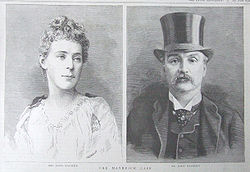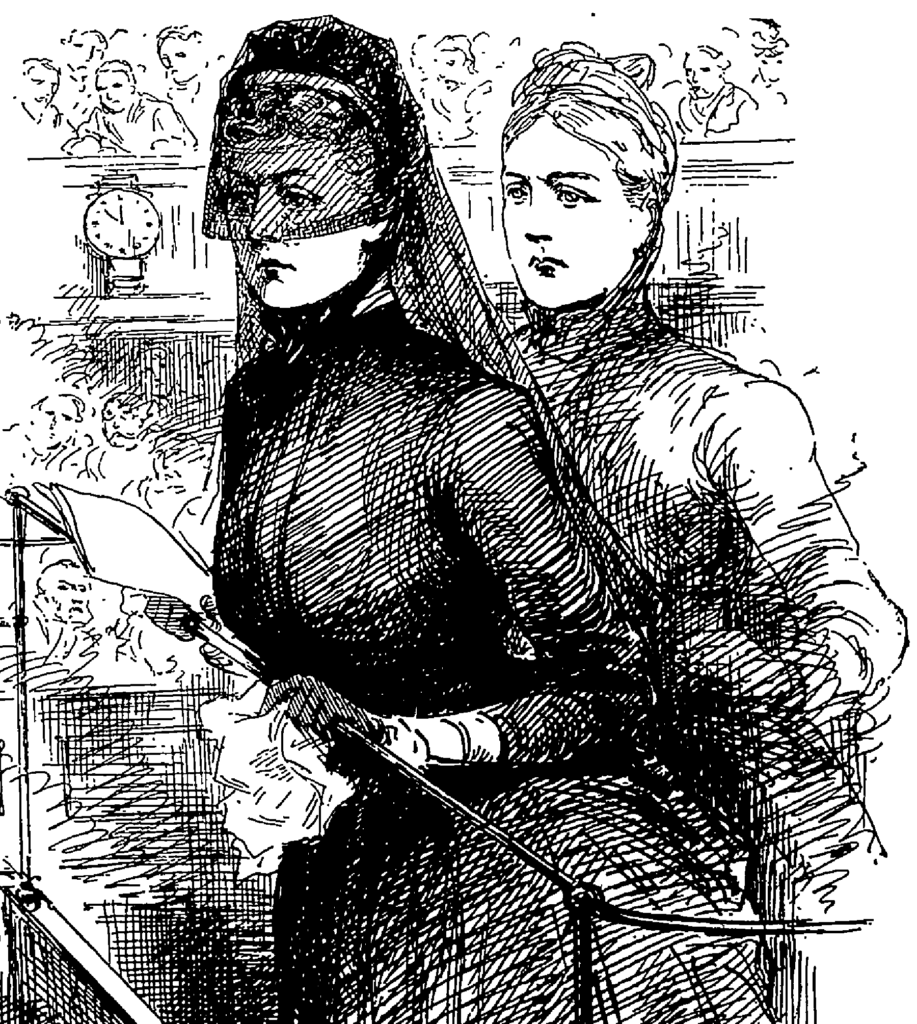
In 1889 American born, Florence Maybrick at the age of just 27 was charged with the murder of her husband following his death in their home town in Liverpool. She was subsequently convicted and sentenced to death.
Her case attraction considerable attention with extensive newspaper coverage both across the UK and also in the United States.
Reports in The Penny Illustrated included drawings of the ‘exceedingly comely and graceful’ Florence Maybrick in full veil reading her statement from the dock.[1] There were also pictures of the family home, of the late James Maybrick, the Maybrick children, Mr Brierley, the trial lawyers and Judge Stephen. It all made for a good read!

A few voices were raised in support of the verdict against Mrs Maybrick but these were drowned out by the voices of those who believed she was being condemned on the basis of her immorality – she was said to have had an affair with another Liverpool businessman, Mr Alfred Brierley, and to have booked into a London hotel with him – rather than on any firm evidence that she had set out to murder her abusive, hypochondriacal and much older husband James.
Letters questioning the legal strength of the case against Florence Maybrick dominated national and local newspapers. And ‘ARSENICUM’ raised the possibility that other women could place themselves at risk of being accused of murder simply by miscalculating the dose of what was then considered a perfectly legitimate tonic or even by wearing contaminated clothing.

Following this public outcry and in response to mass meetings and petitions demanding a reprieve, she was saved from the gallows at the last hour – the workmen had already started building the scaffold.
Her death sentence was changed to that of a life sentence and Mrs Maybrick spent 14 years in prison. On her release she returned to America, where she went on to live a reclusive life in Connecticut, tragically never seeing her children again. She died alone and destitute in 1941.
According to reports among the very few possessions she left behind was a tattered old bible in which, tucked between its pages, were directions for soaking flypapers for use as a beauty treatment.
To read more on the Florence Maybrick story see Kate Colquhoun’s book ‘Did She Kill Him? A Victorian Tale of Deception, Adultery & Arsenic’.
Footnotes
[1] Penny Illustrated, August 17th 1889, Issue 1473.
[2] Daily News August 12 1889
